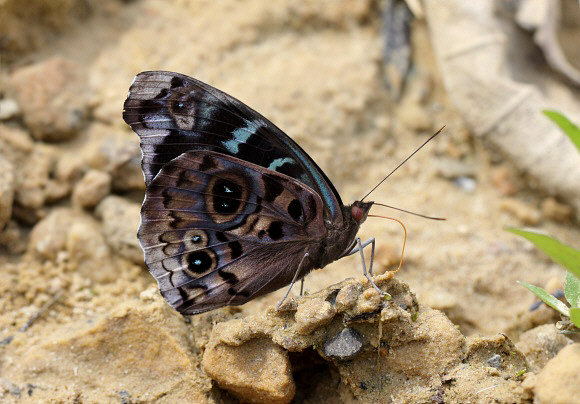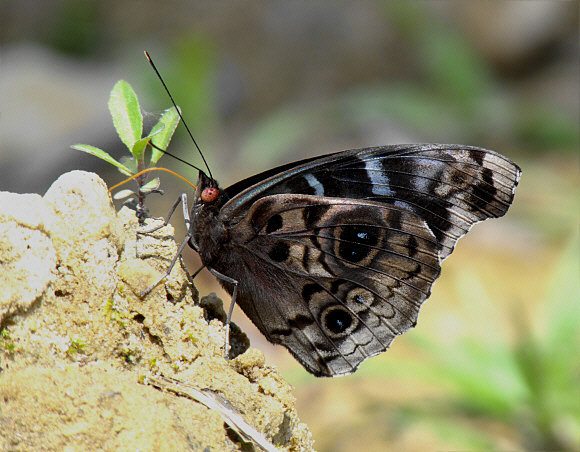 Eunica volumna celma, Pauti, Junin, Peru – Adrian Hoskins
Eunica volumna celma, Pauti, Junin, Peru – Adrian Hoskins
Introduction
The genus Eunica contains 40 species colloquially known as Purplewings due to the dazzling purple or metallic blue iridescence on the uppersides of the males. The ventral hindwings of many species are beautifully marbled, and bear a distinctive arrangement of ocelli.
There are 3 subspecies of Eunica volumna. In the northern form venusia which occurs from Mexico to Colombia the dorsal forewings of the male are black, and the hindwings almost entirely covered with a blue sheen. In the Andean form celma the blue sheen is restricted to the outer margin of the hindwings. The most beautiful race is volumna volumna which is found in Amazonia, in which the females are brilliant blue on both wings. The females of all forms have a broad white diagonal band across the forewings.Eunica volumna is distributed from southern Mexico to Peru and across most of Amazonia.
Habitats
This species is found in rainforest habitats at elevations between sea level and about 1000m.
Lifecycle
The lifecycle of Eunica species in general is poorly known and I can find no published details of the early stages of this species. The eggs of most Eunica species are laid singly on the flowers and leaf buds of trees including Mabea ( Euphorbiaceae ) and Bursera ( Burseraceea ). The larvae are likely to vary considerably in colouration and pattern from species to species, but generally have short spines along the sides, and a single row of longer erect spines on the last 3 segments of the body.
Adult behaviour
Females are normally encountered singly, flying in light gaps in the forest understorey or basking on bushes along forest trails. Males also bask on foliage, particularly in late afternoon. They are also often seen in one’s and two’s mud-puddling at the edges of pools, streams or river beaches.

Eunica volumna celma, Satipo, Peru – Dave Griffiths
